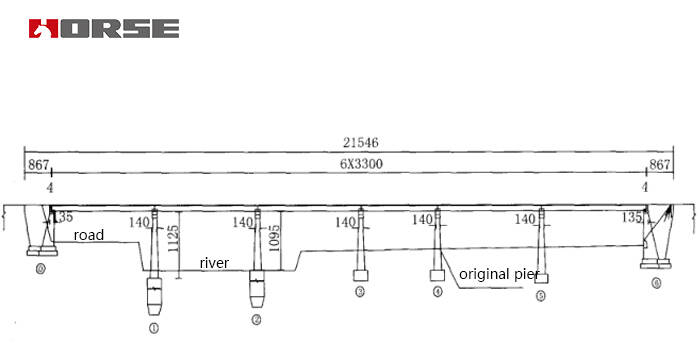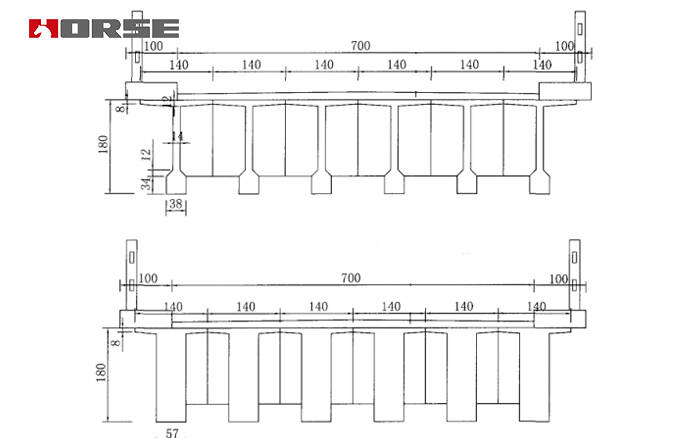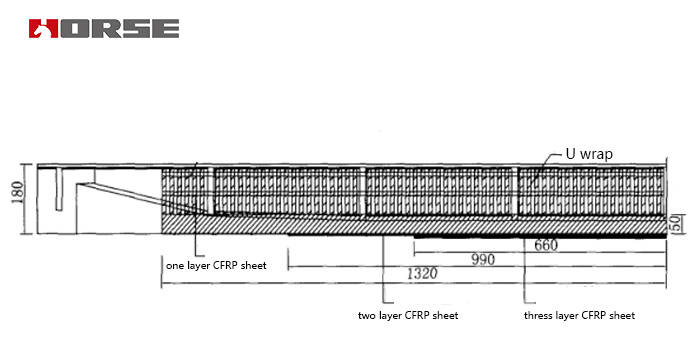Disease and strengthening scheme of simply supported T-beam brid
Fiber reinfroced polymer(FRP) fabric
Fiber reinfroced polymer(FRP) fabric has high reliability and can improve the bending capacity of the main girder and prolong the service life of the T beam.
Project overview
The bridge was built in 1960s, and the upper part is prestressed simply supported T beam. For many years, the design load of the original bridge can not meet the demand of traffic development. The lateral connection of the T beam is weakened. The force of the single beam is more than the original design load, which causes the crack of the beam, which seriously affects the durability and operation safety of the structure.

Disease status
the concrete strength of the bridge is not high, the distribution of cracks in the girder is rich, the local reinforcement is corroded in the beam, and the water is seriously damaged. For the current inspection situation, the disease has reduced the structural safety reserve capacity.
The bridge deck pavement is seriously damaged and there are many cracks. When the bridge is running, the deck vibration is larger, the bearing is damaged, and some beams have slight settlement and larger deflection.
The present bridge disease shows that the durability of the bridge has become a prominent problem restricting the use of the bridge, and the deterioration of the bridge function has entered an accelerated period.
The bridge is expected to have more heavy traffic. With the completion of road reconstruction, the characteristics of heavy traffic will gradually appear.

Cause of disease
Because the design load of the original bridge is the old standard, it is lower than the new load standard, and the heavy load traffic on the road along the road is large, and there is overloading phenomenon. The effect of the vehicle exceeds the original design load of the original T beam.
The connection of T beams and beams is rusty or damaged, the lateral connection of T beams is weakened, and the lateral stiffness of bridges is relatively weak.
The thickness of the original bridge deck is small, it is difficult to resist the impact of the vehicle, causing the failure of the pavement and the failure of the waterproof function of the bridge surface, which causes the water leakage at the bottom of the bridge, accelerated the aging of the concrete of the beam, and caused the corrosion of the steel bar in the beam.
Reinforcement scheme: FRP fabric strengthening

The surface layer and concrete pavement of the original bridge deck are chiseled, and the cracks of the crack width < 0.15r a m are treated by surface sealing, and then the surface is closed with epoxy resin adhesive. For cracks more than 0.15m m, the pressure grouting method was used to repair the cracks (with a certain pressure to inject the low viscosity, high strength crack repair glue into the fracture cavity).
Rust removing, repairing and brushing anti rust paint for the connecting steel plates between the original T beams.
The original T beam is implanted with steel, and the top surface of the original T beam is chiseled, cleaned and brushed, and then 15cm thick C40 flexural concrete is poured. The concrete is set up with two layers of steel mesh, and the steel mesh is connected with the embedded steel bar on the T beam.
The epoxy resin bonding agent is used to paste FRP fabric at the bottom of the original bridge T beam to improve the tensile capacity of the T beam span, and the bearing capacity of the T beam is raised to the standard of the road I grade. The bridge T beam is centered in the middle of the bridge. A FRP fabric is attached to the length of 0.8 times longitudinal beam, second layers of FRP fabric is attached to 0.6 times the length of the beam and third layers of FRP fabric are attached to the length of the beam in the length of 0.4 times.